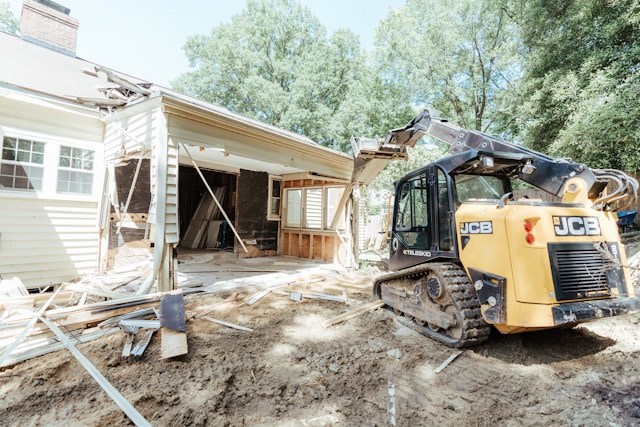How Much Should You Really Pay a General Contractor for a Single-Family Home Project?
October 6, 2025You should expect to pay your general contractor between 15-25% of your total construction costs for a single-family home project. This fee covers their profit margin (10-20%), overhead expenses like office staff and equipment, and management of both hard costs (materials, labor) and soft costs (permits, insurance). Your final price will depend on factors like project complexity, material selections, and regional market conditions. Understanding these components helps guarantee you’re getting fair value for your investment.

Introduction
Three key factors determine how much you’ll pay a general contractor for your single-family home project: the scope of work, your location, and the contractor’s pricing structure. Whether you’re planning a new build, renovation, or addition, understanding general contractor pricing is essential for budget planning. Your contractor might propose a cost-plus contract, where they charge actual costs plus a percentage markup, or offer a fixed-price agreement. Location greatly impacts costs through local permitting fees, labor rates, and material availability. Before signing any agreement, you’ll need to evaluate these factors to guarantee fair pricing and project success.
What Makes Up General Contractor Pricing?
A typical general contractor’s fee structure includes several key components that you’ll need to understand before signing any agreement. The construction cost breakdown typically consists of hard costs (materials, labor, equipment) and soft costs (permits, insurance, design fees). Your GC will then add overhead and profit margins of 10-20% to cover business operations and guarantee profitability.
GC overhead and profit includes operational expenses like office staff, vehicles, tools, marketing, and licensing. Understanding these components helps you evaluate quotes more effectively and guarantees you’re comparing similar scope and markup structures when reviewing multiple contractor proposals.
Pricing Models Explained: How GCs Charge
General contractors typically use several established pricing models when bidding on residential construction projects. You’ll encounter three main approaches: fixed-price construction contracts, cost-plus agreements, and guaranteed maximum price (GMP) arrangements.
With fixed-price contracts, you’ll pay a predetermined amount regardless of actual costs. Cost-plus pricing adds a percentage markup to all expenses, offering transparency but requiring trust. A guaranteed maximum price sets a ceiling while allowing savings to be shared. Each model balances risk differently between you and the contractor, making it essential to understand their implications before signing any agreement.
Regional Benchmark: Texas & Houston Suburbs
While these pricing models apply nationwide, local market conditions in Texas greatly influence contractor rates and project costs. In Houston’s suburbs like Tomball, you’ll find GC markup percentage typically ranges from 15-20% due to high demand and operational costs. Texas home construction cost per sq ft varies tremendously—from $150 to $300+ depending on your location and finish level. Factors unique to the region include stringent permit requirements, seasonal labor fluctuations, and material transportation costs. Understanding these local benchmarks helps you evaluate quotes more effectively and negotiate fair terms with your contractor.
What Drives Your Price Up or Down
Several key factors can substantially impact your general contractor’s final price, whether pushing costs higher or helping you save money. When evaluating the cost to build a house in Texas, complexity of design, material selections, and site conditions considerably affect pricing. Your contractor estimate checklist should consider timing, as peak construction seasons typically command premium rates. Premium finishes and custom features will increase costs, while simplified designs and standard materials can reduce expenses. Market conditions, labor availability, and permit requirements in your specific area also play pivotal roles in determining your project’s final cost.
How to Evaluate a GC’s Estimate Like a Pro
Understanding how costs fluctuate is just part of the equation—you’ll also need to know how to properly assess a contractor’s estimate. When evaluating quotes from a single-family home builder Houston area experts recommend breaking down each line item carefully. Compare material costs against market rates, verify labor estimates match the scope, and guarantee overhead percentages fall within industry standards.
Look for detailed breakdowns of both hard and soft costs in home renovation GC pricing. Red flags include vague allowances, missing permit fees, or unrealistic timelines. Request clarification on markup structures and payment schedules. Compare at least three estimates to spot pricing anomalies and safeguard competitive rates.
Avoiding Overpayment & Getting Fair Value
Getting fair value from your general contractor requires strategic negotiation and careful attention to pricing details. To avoid overpaying, understand that a typical gc profit margin ranges from 10-20% depending on project complexity. Don’t automatically accept a time and materials contract, as these can lead to cost overruns. Instead, request detailed line-item breakdowns, compare multiple bids, and negotiate clear payment schedules. Ask about volume discounts on materials and verify subcontractor rates. Consider a hybrid pricing model that maintains quality while protecting your budget through cost controls and performance incentives.
Conclusion
Smart contractor pricing requires careful research, negotiation, and a clear understanding of your project’s scope. When evaluating bids, you’ll need to analyze both hard costs vs soft costs while factoring in potential change order costs that could impact your budget. Remember that a quality contractor’s fee structure should be transparent and align with industry standards for your area. By thoroughly vetting contractors, understanding pricing models, and maintaining clear communication throughout the project, you’ll be better positioned to get fair value while avoiding cost overruns. Choose a contractor who demonstrates professionalism, provides detailed estimates, and has a track record of successful projects.